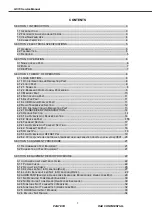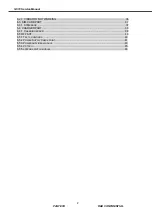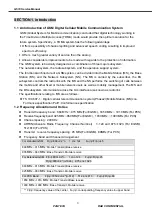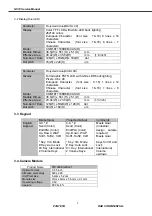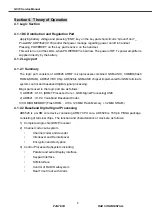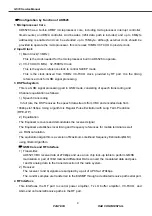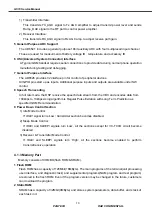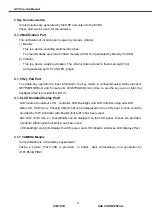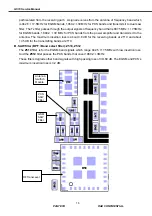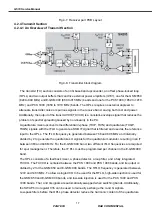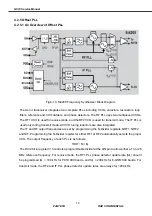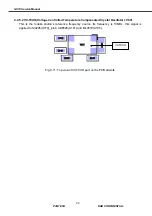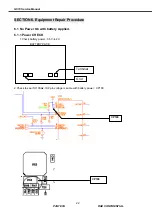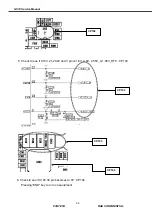
G510 Service Manual
PANTECH
R&D
CONFIDENTIAL
9
☞
Configuration by Function of AD6526
1 Microprocessor Core
AD6526 has a built-in ARM7 microprocessor core, including microprocessor interrupt controller,
timer/counter, and DMA controller. And besides, 32bit data path is included, and up to 8Mbyte
addressing is enabled and can be extended up to 16Mbyte. Although external clock should be
provided to operate the microprocessor, this core uses 13MHz VCTCXO to provide clock.
2 Input Clock
1) Main Clock(13 MHz):
This is the clock needed for the microprocessor built in AD6526 to operate.
2) VC-TCXO(13 MHz) , 32.768KHz Clock:
This is the system reference clock to control SLEEP mode.
This is the clock derived from 13MHz VC-TCXO clock, provided by RF part. It is the timing
reference clock for GSM signal processing.
3 DSP Subsystem
This is a GSM signal processing part in GSM mode, consisting of speech transcoding and
Channel equalization as follows:
1) Speech transcoding
In full rate, the DSP receives the speech data stream from VBC and encodes data from
104kbps to13kbps. Using algorithm is Regular Pulse Excitation with Long Term Prediction
(RPE-LTP).
2) Equalization
The Equalizer recovers and demodulates the received signal
The Equalizer establishes local timing and frequency references for mobile terminal as well
as RSSI calculation.
The equlization algorithm is a version of Maximum Likelihood Sequency Estimation(MLSI)
using Viterbi Algorithm.
☞
GSM Core and RF Interface
1) Transmitter:
AD6521 VBC receive data at 270kbps and use an on chip lock-up table to perform GMSK
modulation. A pair of 10bit matched differential DACs convert the modulated data and pass
I and Q analog data to the transmit section of the radio system.
2) Receiver:
The receiver I and Q signals are sampled by a pair of APCS at 270kbps.
The I and Q samples are transferred to the EGSMP through a dedicated receive path serial port.
4 RF Interface
This interfaces the RF part to control power amplifier, Tx LO buffer amplifier, VC-TCXO, and
AGC-end on transmit/receive paths in the RF part.


